CONSERVATION CORNER
A weekly blog for all things conservation
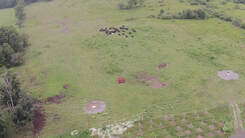 Kevin Brown, Ag Resource Specialist, BCCD So you have animals, or you want to get some. You may have 1-2 acres that you can put them on, or you may have 10 acres. To most people, when they look at that much land, they think “That is a lot of land and it will support however many animals I want to have”. Let’s be honest, 3-5 horses on one full acre of ground doesn’t look like much. Neither does 15 cows on a full 10 acres of land. So, you get the number of animals you want and start a farm. All is well. The animals have plenty enough land to roam on. They are comfortable and happy. And when you start supplementing them with hay, you don’t think anything about it. That is how it is supposed to be. Right? Well, no, not really. Not for you or the environment.
0 Comments
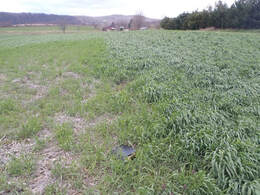 Small grain field (grass would be the same) with extra nutrients on the right and none on the left Small grain field (grass would be the same) with extra nutrients on the right and none on the left By: Kevin Brown, Ag Team Leader So, my first comment is “nothing can compete with well managed grass in the northeast”. If you manage and feed your grasses correctly, they will outcompete everything else. If you have weeds, it is because the grasses are not being managed as well as they can be. They are lacking a good cutting schedule or nutrients. Depending on the weed, cutting them on a timely basis will help a lot. Most weeds we deal with are annuals. They live one year. You cut hem before they go to seed then you have that many less weed seeds next year. Do that a few years in a row and there are “no” seeds left to germinate. Now, that does not work on perennials. They will be harder to deal with. Call me and we can discuss how to handle them. It will depend on the weed. 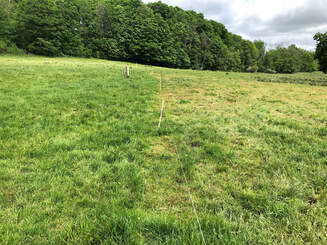 Kevin Brown, BCCD, Ag Team Leader So, it is that time of year again. Time to let the animals out to pasture. No more feeding them stored forages that you had to make. No more catering to their every whim. Now, they can be let out and go take care of themselves. Well, at least for a short period of time. We like to say that we are “pasturing” our animals, but are we really? Yes, there are some that are, and do a really good job of it. However, opening the gate and letting them roam free on the same pasture for the next 6-7 months is not pasturing. That is an exercise lot. Yea, there may be some grass growing there originally, but unless you have an expansive pasture, that goes away fast. And even if you have a big enough lot that you don’t have to feed them any stored forages, you really aren’t doing the best thing for any of the resources you have. I will try to give you some information on some of the things going on with this style of “pasturing” that you may not know. It could make you a lot more money. 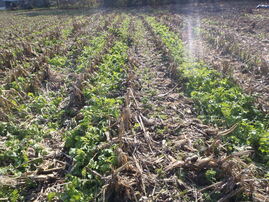 By: Kevin Brown, BCCD In case you missed last week’s meeting, I will give a quick overview of some of the information that was gone over at the meeting. First off, ANYONE that owns a farm animal needs to have a Manure Management Plan. Period. One chicken, one cow, one horse, etc. Now before you go getting all jacked up, it is easy as pie to do. We all know of an operation somewhere that only has a few animals and they are having a huge impact on the stream. (That’s PC for what’s really going on). This is why it applies to anyone having a farm animal. Now, if you want to write the plan yourself, go to www.paonestop.psu.edu and you have the ability to write your own plan. You do not need to send it in anywhere. No one needs to verify it. You just keep it, and keep records on where your manure goes. If you have any questions, contact me and I will help you work through it. For an operation with only a few animals, it won’t take long at all. And, if DEP or the Conservation District stops for any reason, it will be the first thing they ask for. It is law. 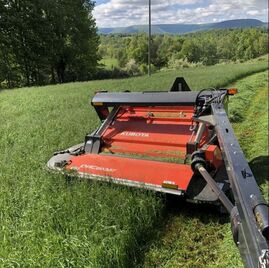 By BRIAN ZEIDNER Over the summer I shared some of my hay-making experiences with you. I wrote about using nitrogen fertilizer, commonly known as urea, on hay fields. Many hay producers really want to know — Is it worth it? To answer that question, we must measure the quantity and quality of the harvest. As noted previously, my first cutting off-farm, non-fertilized fields produced less than two round bales per acre, while my on-farm nitrogen-fertilized ground produced 5.5 round bales per acre. The increase in the amount of hay certainly seems substantial. I also measured the quality of the hay using forage tests. I am raising beef cows and although there are many forage considerations, I look closely at three different measures on my forage tests, Crude Protein (CP), Neutral Detergent Fiber (NDF) and Energy (TDN). Although I reference these factors there are many other measurements on forage tests that a professional nutritionist may use to make recommendations. 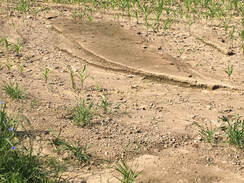 By: Pennsylvania Department of Environmental Protection Pennsylvania’s Commonwealth boundaries encompass at least 85,568 miles of streams and 242 major publicly accessible lakes comprising 125,119 surface water acres. Section 303 of the Federal Clean Water Act requires that states, territories, and authorized tribes, collectively referred to in the act as "states," prepare water quality standards and assess all streams and lakes. Since1972 enactment, each water body is to have calculated an upper pollution limit that maintains water quality meeting state standards for each pollutant present. Standards vary among the states depending on each state’s protected uses. In Pennsylvania, these protected uses are listed as fish consumption, recreation, public water use, and biological life. 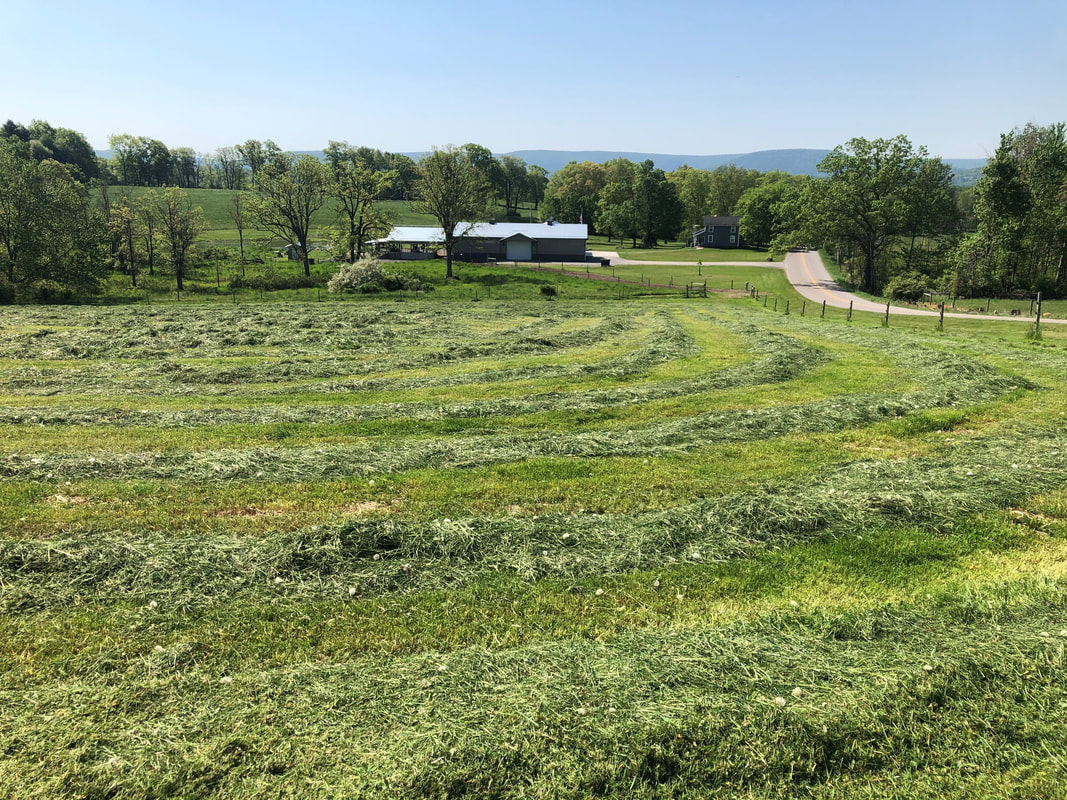 By: Brian Zeidner, Guest Columnist and Bradford County Beef Producer I have a confession. I dislike numbers. But I do like information and have found that if I want to know how well my small beef farm is running, I need to measure my progress and track the results. Tracking the grain inputs of steers when finishing and checking the grade of the beef after butchering lets me know and measure the quality of my product. Calculating manure application on the hay fields builds my soils and ensures I do not contribute to water quality issues with nutrient run-off. 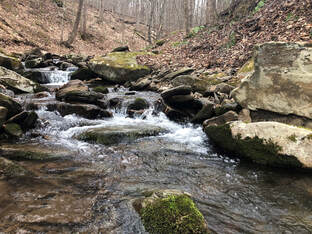 By: Cathy Yeakel, District Manager, BCCD Pennsylvania and neighboring states are working at local levels to clean up our state’s waterways that flow into the Chesapeake Bay. In 2019, the Pennsylvania Department of Environmental Protection (DEP) submitted the Phase III Watershed Implementation Plan (WIP), which established tangible nutrient reduction goals based on locally-led initiatives to reduce water pollution, improve quality of life, address flooding problems, and obtain credit for previously installed best management practices. Within the Phase III WIP, all 43 Pennsylvanian counties within the Chesapeake Bay watershed were tasked with developing their own Community Clean Water Action Plan (CAP).  By: Nathan Dewing, Agricultural Team Leader Think about all the places where you like water to be. The list might include the backyard babbling brook, the seashore, beside the Lake House, under your boat, household plumbing, and your glass complete with ice cubes. There are also plenty of places where you don’t want it like your yard, driveway, basement, or living room. To get it right, we must look at our soil. 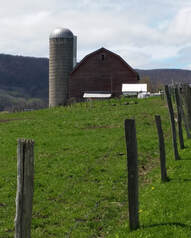 By: Amy Kneller, Ag Resource Specialist Are you interested in protecting farms, farmland, and a persons’ ability to farm? Protecting agriculture doesn’t always require a conservation easement – it can mean simply securing the right of farmers to farm without dealing with overly burdensome regulations. That’s the role of an Agricultural Security Area (ASA), where agriculture is a primary activity in the municipality. Farmers work with municipalities to develop ASAs, which demonstrate that farming is a local priority and promote more permanent and viable farming operations. |
AuthorsVarious staff at the Bradford County Conservation District Archives
July 2024
Categories
All
|
|
Bradford County Conservation District
Stoll Natural Resource Center 200 Lake Road, Suite E | Towanda PA 18848 Phone: (570)-485-3144 |
